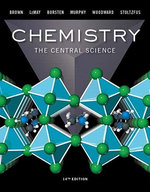?(a) Read the following description of the element zinc and indicate which are physical
Chapter 1, Problem 1.20(choose chapter or problem)
(a) Read the following description of the element zinc and indicate which are physical properties and which are chemical properties.
Zinc melts at \(420^{\circ} \mathrm{C}\). When zinc granules are added to dilute sulfuric acid, hydrogen is given off and the metal dissolves. Zinc has a hardness on the Mohs scale of 2.5 and a density of \(7.13 \mathrm{~g} / \mathrm{cm}^{3}\) at \(25^{\circ} \mathrm{C}\). It reacts slowly with oxygen gas at elevated temperatures to form zinc oxide, ZnO.
(b) Which properties of zinc can you describe from the photo? Are these physical or chemical properties?
Text Transcription:
7.13 g/cm^3
25^{\circ} C
Unfortunately, we don't have that question answered yet. But you can get it answered in just 5 hours by Logging in or Becoming a subscriber.
Becoming a subscriber
Or look for another answer
